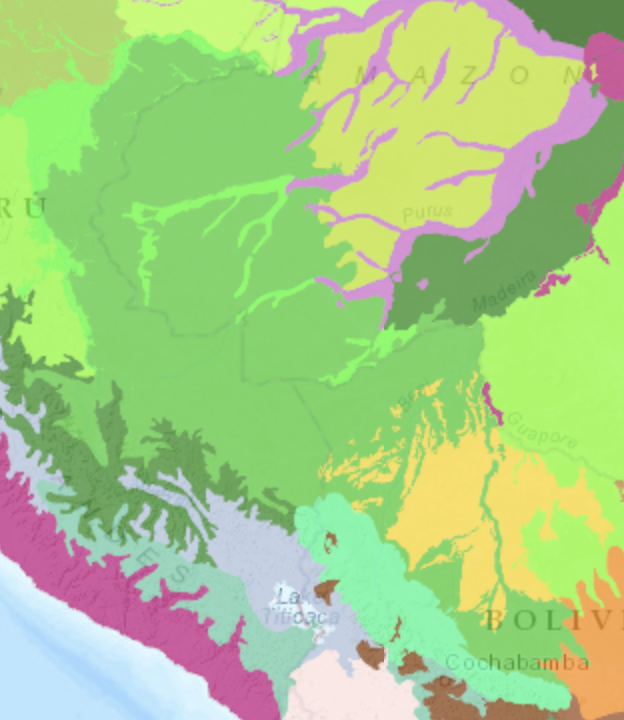This ecoregion is the medium-green area in the image below, occupying a huge area of Peru, Brazil, and Bolivia.
Adjacent ecoregions, from the southwest clockwise, include the Peruvian Yungas (NT0153); and to the northwest and north the Iquitos Várzea (NT0128) (which also has disjunct large extents of várzea extending into the middle of the ecoregion); to the northeast, purplish ribbons of the Purus Varzéa (NT0156) extend into the ecoregion; they flow through the Juruá-Purus Moist Forests (NT0133); to the northeast, just to the north of the Madeira, is the Purus-Madeira Moist Forests (NT0157); directly to the east is the Maderia-Tapajós Moist Forests (NT0135); the orangish ecoregion to the southeast is the Beni Savanna (NT0702); the dark brown ecoregion to the southeast is the Chitquitano Dry Forests (NT0212); and finally, to the south are the Bolivian Yungas (NT0105).

Description of the Ecoregion
As summarized in Wikipedia, the forests of the ecoregion can be described as follows:
Landforms present in this region include the upland terra firme (non-flooded) mostly on nutrient-poor lateritic soils, ancient alluvial plains (mostly non-flooded) on nutrient-rich soils, and present alluvial plains (várzea, seasonally flooded) of super-rich sediments renewed with each annual flood. Floristically, distinct lowland humid forest types occur on each of these landforms with the terra firme mature forests and late successional, seasonally flooded forest being the two major types. Permanent swamp forests are common on the alluvial plains. Pockets of nutrient-poor white sand soils are found here that host forests of lower height, a more open forest canopy, and lower alpha diversity, but with many endemics. The forests are mostly dense tropical rain forest, but some patches of open forest exist.
Birds of the Ecoregion
Wikipedia notes that bird richness of this ecoregion is the highest in the Amazonian biogeographic realm with 782 species and 17 endemics.